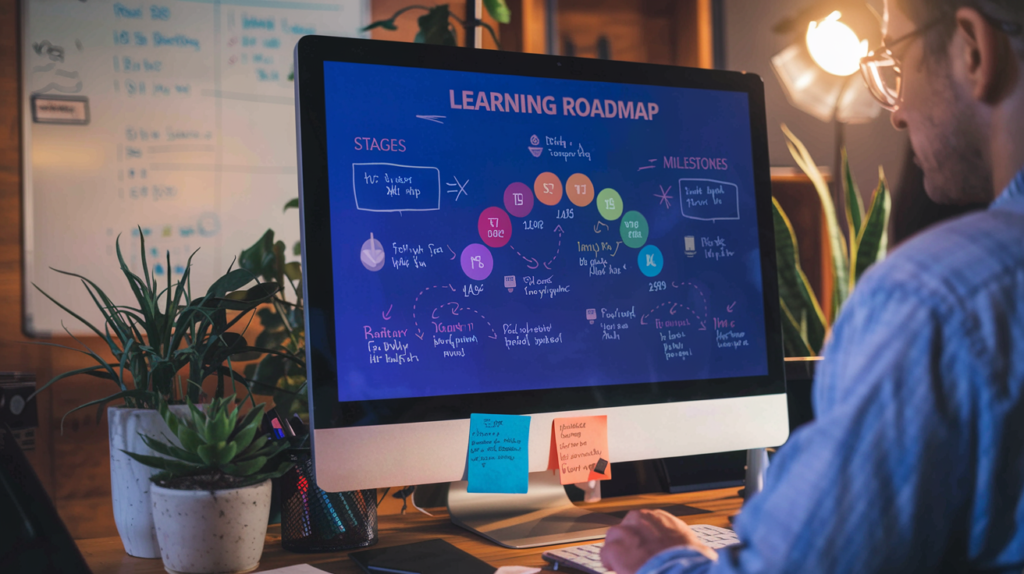use cases
Skill Gap Analysis
Pinpoint and resolve workforce skill gaps instantly with AI-powered precision. Equip your teams with the tools they need to excel, ensuring business readiness and unmatched service delivery.

Why Skill Gap Analysis is Essential
Staying ahead in service-driven industries requires a workforce equipped with the right skills at the right time. Skill gap analysis ensures operational excellence, seamless customer interactions, and future readiness.
- Upskill a workforce that drives efficiency
- Reduced reliance on manual interventions
- Identify bottlenecks in service delivery
- Elevate customer experiences instantly
How Spire.AI Helps
Proactive Solutions for Skill Gaps in Core Services Industries

Detect Gaps Before They Impact Performance
Skill gaps in service roles often go unnoticed until they create visible problems, such as customer dissatisfaction or inefficiencies in service delivery. Spire.AI identifies these deficiencies in real time by analyzing employee performance metrics, role expectations, and customer feedback. With AI-powered detection, organizations can pinpoint gaps early, allowing managers to address them before they escalate into larger operational issues. By providing instant insights, Spire.AI ensures teams remain aligned with organizational goals, reducing the risk of delays, errors, or inconsistent service experiences.
Tailored Upskilling for Immediate Results
Addressing skill gaps effectively requires personalized solutions rather than generic training programs. Spire.AI customizes upskilling initiatives by analyzing individual employee data and mapping it to specific role requirements. The platform provides recommendations for targeted learning pathways, which may include training modules, certifications, or mentorship programs. This approach ensures employees focus on acquiring the exact skills they need to excel in their roles, driving measurable improvements in performance and service delivery within shorter timeframes.


Role-Specific Competency Mapping for Precision
Every role in service industries requires a unique combination of skills and expertise, and misalignment can lead to inefficiencies and gaps in service delivery. Spire.AI uses role-specific competency mapping to ensure employees meet and exceed the expectations of their positions. The platform dynamically adjusts these mappings as roles evolve or as new responsibilities emerge, keeping workforce alignment intact. This allows organizations to build stronger teams and maintain a high standard of service while ensuring that employees are adequately prepared for the demands of their roles.
Optimize Workforce Readiness with Predictive Analytics
Core services industries often operate in unpredictable environments where workforce needs can change rapidly due to seasonal demand, new regulations, or evolving customer expectations. Spire.AI leverages predictive analytics to anticipate these changes and prepare organizations in advance. By analyzing historical trends and current performance data, the platform provides actionable insights that allow companies to develop proactive skilling plans. This ensures teams are ready to adapt to new challenges, maintaining consistent service quality even during peak periods or shifts in business strategy.

Solution Summary
What Makes Spire.AI so Effective?
Real-Time, AI-Driven Skill Insights with Automated Profiling
Spire.AI’s Empollination™ solution ensures that skill profiling is no longer a static process but an intelligent, dynamic system that continuously evolves with employees. By leveraging AI to generate, aggregate, and validate skill data in real-time, organizations can maintain a highly accurate inventory of workforce capabilities. Automated skill profiling eliminates guesswork and ensures that businesses always have a clear, up-to-date understanding of their talent landscape. This helps leaders make informed decisions about talent placement, workforce planning, and skill development, ensuring that employees are consistently aligned with business needs.
AI-Recommended Growth Paths for Career Progression
Empollination™ delivers live visibility into career growth opportunities, helping employees move forward in their careers with confidence. By mapping both lateral and vertical progression paths, the platform contextualizes each employee’s journey based on their skills, aspirations, and evolving industry demands. Employees receive personalized career roadmaps that suggest tailored learning modules, certifications, mentorship programs, and experiential learning opportunities to help them upskill effectively. This removes ambiguity from career planning, boosting employee motivation and reducing attrition by ensuring continuous professional development.
Intelligent Skill Gap Identification & Targeted Learning
Skill gaps are one of the biggest barriers to workforce efficiency, and traditional approaches to addressing them are often reactive and ineffective. Empollination™ leverages AI to pinpoint these gaps proactively, providing organizations with real-time visibility into workforce deficiencies. The platform automatically recommends targeted interventions, such as microlearning courses, reskilling programs, and on-the-job training to bridge these gaps efficiently. By embedding continuous learning into daily workflows, Empollination™ ensures employees are always equipped to handle evolving job roles and business requirements, strengthening overall workforce resilience.
Internal Opportunity Marketplace to Enable Workforce Mobility
Empollination™ creates a dynamic internal talent marketplace, allowing employees to discover career opportunities within the organization that align with their skills and aspirations. This ensures that talent is not wasted in stagnant roles but is instead redeployed where it can make the greatest impact. By fostering a culture of internal mobility, businesses can reduce reliance on external hiring, minimize bench time, and optimize workforce utilization. Employees gain access to stretch assignments, mentorship programs, and cross-functional projects that enable them to develop new competencies while driving organizational success.
See Spire.AI in Action
Connect with Us
Have questions or want to learn more about how Spire.AI can revolutionize your workforce?
Our team of experts is here to provide you with the insights and support you need. Reach out today and discover how our AI-powered solutions can drive your organization’s talent success.
- Discuss your talent challenges and explore how our AI solutions can meet your needs.
- Experience a live demo of our Domain-Intelligent AI-driven platforms.
- Discover how our tools optimize workforce planning with precise skill mapping and predictive analytics.
- Learn how Spire.AI seamlessly integrates with your current HR systems for smooth implementation.
- Explore the tangible benefits, from cost savings to improved hiring efficiency, with real-world success stories.
FAQs
It integrates with your workforce systems, using AI to analyze performance data, training records, and role requirements for instant gap detection.
With real-time insights and personalized training paths, Spire.AI enables immediate action to close gaps effectively.
By ensuring employees have the right skills, organizations can reduce errors, resolve customer issues faster, and deliver a seamless experience.
More Use Cases
Use Cases for Every Step of the Talent Lifecycle
Demand Matching
Match critical roles with internal talent in real-time, ensuring rapid role fulfillment and reducing reliance on external hiring.
Workforce Planning
Optimize workforce strategy with real-time insights, enabling better resource allocation and proactive talent deployment.
Talent Discovery
Identify internal talent for new opportunities through AI-driven skill visibility and proactive demand-supply matching.

Don’t Let Outdated Frameworks Hold Your Organization Back
Harness Spire.AI to Build, Deploy, and Elevate Talent Effectively


